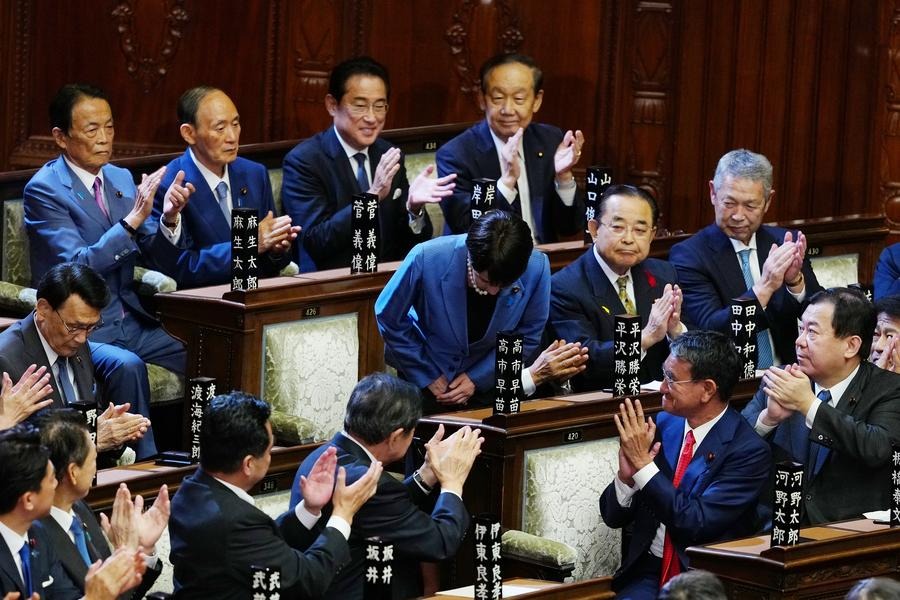Military spending increase necessary to protect national security, core interests and global peace: China Daily editorial

China has announced that it will increase its national defense budget by 7.2 percent this year. This is the 10th consecutive year of single-digit growth.
The increase is the same as the previous two years, enabling the country's planned defense expenditure to reach about 1.785 trillion yuan ($249 billion) this year, according to a draft budget report submitted to the national legislature for deliberation.
The country's defense expenditure as a percentage of GDP has been below 1.5 percent for many years, lower than the world average, according to a spokesman for the third session of the 14th National People's Congress.
In comparison, the United States has pledged to spend no less than 3 percent of its GDP on national defense, and its president has recently asked the country's NATO allies to spend 5 percent of their GDP on defense, 3 percentage points more than the current target. Not to mention that China's defense spending in per-capita terms has been far less than those of the US and its allies.
Yet despite this, China hawks in the West have indulged in their customary scaremongering, raising cries of alarm about the size of the increase and what they claim is a lack of transparency. They are not interested in the fact that China's defense budget is less than one-third that of the US, which accounts for around 40 percent of the world's military spending. In fact, China's military modernization goals are there for all to see in the 14th Five-Year Plan (2021-25), which serves as a comprehensive blueprint for the modernization and development of the People's Liberation Army.
The scaremongering in the West hypes up the modern weaponry that the PLA is introducing, such as aircraft carriers and stealth fighters, but the aim is to achieve full modernization in terms of technology, equipment, organization, and operational capabilities by 2035. That requires funding for military training, combat readiness, and the development of new combat capabilities, among other things.
A proportion of the US defense budget funds the Pacific Deterrence Initiative, which is a strategic framework designed to enhance the US' military presence and capabilities in the "Indo-Pacific" region.
Part of that initiative involves the US and many of its allies, including Australia, Canada, France, Japan, and the United Kingdom engaging in military exercises close to Chinese territories as well as the siting of US military bases and missile systems around China, which the China hawks ignore as a motivating factor for China's military modernization and so-called assertive behavior.
Yet most people faced with an armed and hostile gang provocatively getting in their face with aggressive taunts and provocative acts would likely wish to have the means to deter an attack or protect themselves if necessary.
The aggressive posturing and military activities of the US and its allies in the Taiwan Strait and South China Sea also serve as a reminder to China of the need to modernize its military to safeguard its territorial integrity. The other scaremongering claim about China's defense budget is that it is bigger than announced as it doesn't include everything, such as its spending on the armed police and coast guard. Yet this is common practice as these usually come under other budgets.
China's defense budget is in line with its determination to build a strong, innovative, and globally competitive military force that can safeguard its national interests and promote peace on the global stage. It should not be forgotten that China is one of the largest contributors of troops to United Nations peacekeeping missions, with over 50,000 peacekeepers having been sent to more than 20 countries and regions worldwide over the past three decades.
Nor that China has not fought a war for more than 40 years, while the US has been involved in more than 100 military interventions in other nations in the post-Cold War era.
Nor that China's fast economic growth over the past several decades has turned the country into the world's second-largest economy and the largest exporter of goods. As China deepens its economic ties with the Global South and expands its Belt and Road Initiative, it needs to ensure that it has the wherewithal to safeguard its development interests.
Those who seek to use its defense budget to hype up a "China threat" are making a mountain out of a molehill.


































